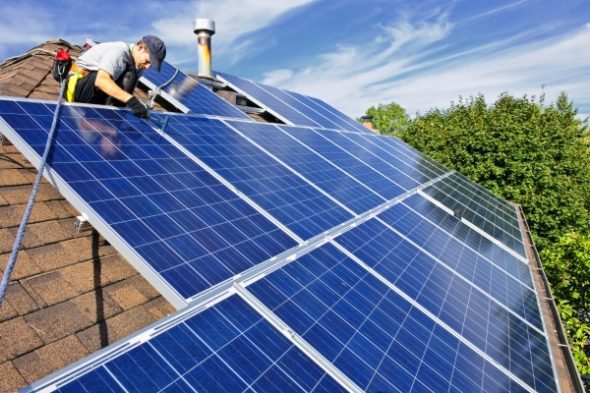On Monday, we provided a glimpse of how the rapid uptake of rooftop solar PV is having an impact on the National Electricity Market, and particularly on the demand profile.
How that demand for solar PV translates onto the NEM, and on revenues from the incumbnent generators, has been a point of fascination not just for us, but also for the people who supervise the market, such as the AEMO, the market operator.
The University of Melbourne’s Mike Sandiford pointed us to more graphs which give some insight into exactly how solar PV is impacting in various states, and it’s particularly relevant in line with the decisions by the pricing regulators in both South Australia and NSW to reflect the fall in wholesale prices in the retail sector, where consumers had so far not shared in the benefits). Sandiford gave his explanation on some of these graphs (and others) in this piece we published in August.
For now, we’ll start off with South Australia, which has the largest penetration of rooftop solar in the country, with nearly one if five houses and accounting for 2.4 per cent of total demand. Already, the impact on demand – and revenue per Megawatt hour – can be seen by these graphs below -the greatest is between noon and 3 pm. The top line of graphs represents impacts on demand as measure in gigawatts, while the second line represents the impact of this falling demand on revenues per megawatt hour.
This reminds us of the graph we published earlier this year about the impact in Germany, in our story Why generators are terrified of solar. That, though, was for a specific day, these graphs represent yearly averages. Imagine the impact, then, should rooftop PV grow to more than 6 per cent of total demand, as AEMO forecasts it to do in South Australia by 2020.
Queensland is another interesting case in point. Queensland does not quite have the levels of penetration as South Australia, but it has accounted for nearly half of the installations of rooftop PV in the country for much of 2012, as it was the last state to have a generous net feed in tariff, before that was repealed by the Campbell Newman government (sparking a mini-boom as customers decided to take advantage of the higher rate).
This also reflects the impact of solar PV on demand, and particularly on revenues – at this stage of deployment it is eating much of the cream of the cake that the generators enjoyed from high midday wholesale prices. The danger is that with further deployment, it will eat some of the cake as well.
Victoria tells us a different story. This state is not blessed with as much sun as Queensland and South Australia in its major population centres, so the midday impact is more muted. What is interesting is the impact at around 2am. Off peak electricity hot water systems were introduced into Victoria to push peak demand away from the day time, and to create night-time demand for its massive coal fired generators. But the proliferation of solar hot water systems is now having an impact there too – particularly in demand terms. However, because night time wholesale electricity prices are low in any case, the impact on revenue is not as keenly felt.












